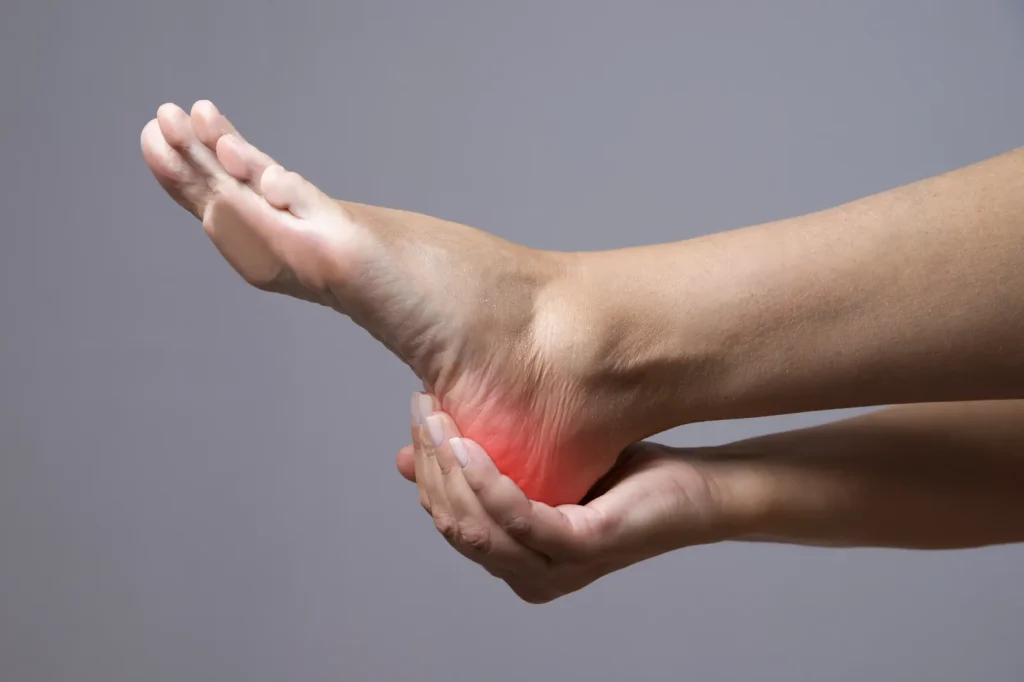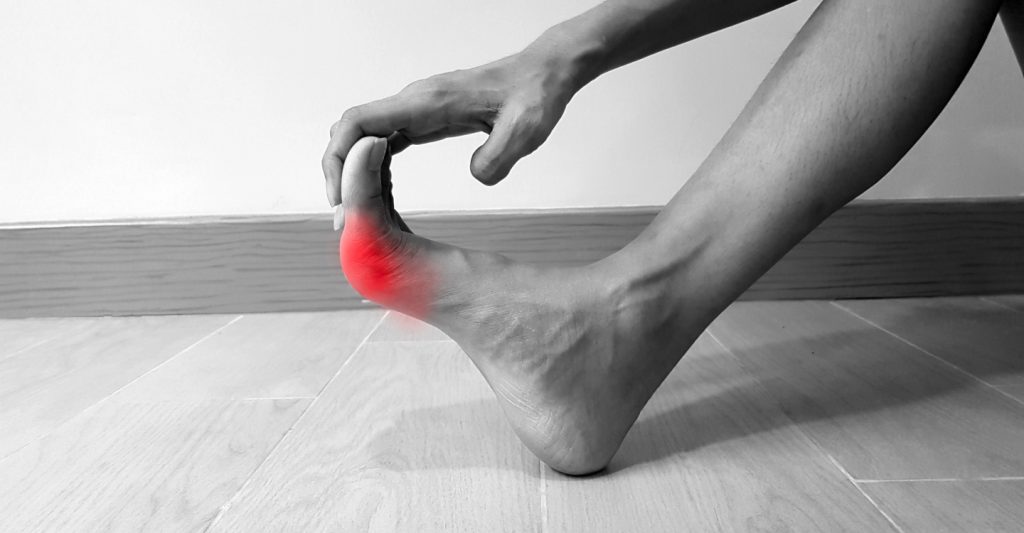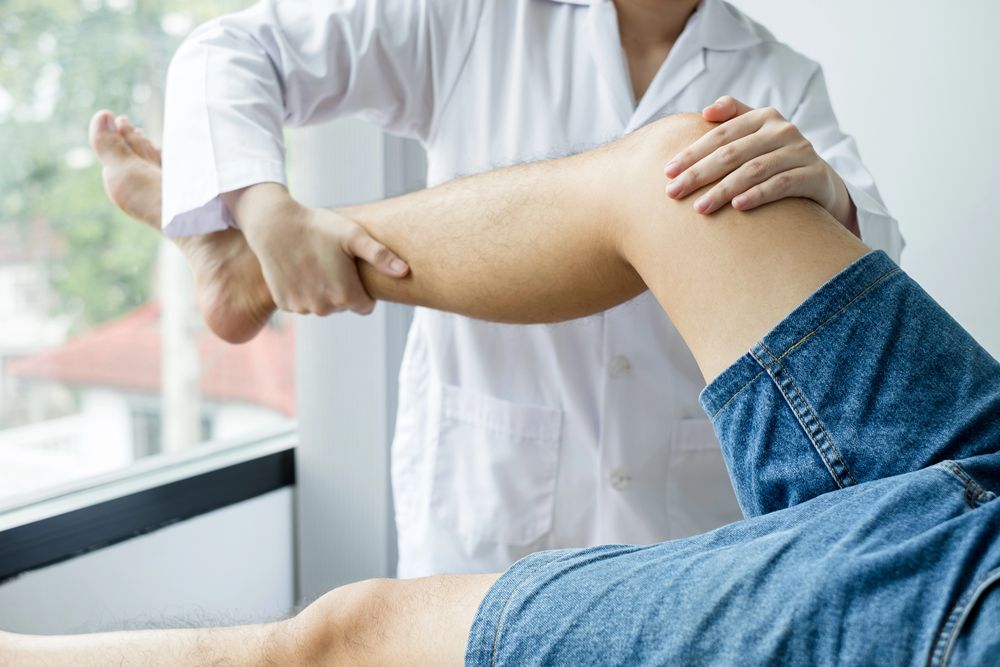The first thing that comes to mind regarding foot care is the standard pedicure, which keeps feet feeling soft and looking pretty. But there’s another route that doesn’t just stop at beauty—the medical pedicure (or “medicure” for short). A medical pedicure is dedicated to foot health and hygiene, targeting problems like corns, calluses, fungi, and ingrown toenails. This specific treatment is generally carried out by a qualified podiatrist or foot care expert in a clinical setting where cleanliness and professional care are maintained.
While a traditional pedicure focuses on soothing and beautification with nail polish and exfoliation, a medical pedicure has a more clinical approach. It aims to detect issues with your feet, treat them, and help you understand optimal foot conditions. However, many folks benefit from what medical pedicures offer regarding ongoing foot health, which leads to being more comfortable and active in the long term.
However, when weighing both treatments, it can be said that while a conventional pedicure is something we enjoy, a medical pedicure forms what we may consider simply as a necessary foundation to care for ourselves. A little foot care is not just for aesthetics; it is also about having a foot that is healthy, painless, and able to carry the rest of your body on it every step of the way.
Knowing the differences between the two options can help you choose the best treatment. Let’s take a closer look at what each one involves and figure out which might work best for your needs.
What is a Traditional Pedicure?
A traditional pedicure is a cosmetic and relaxing foot treatment that enhances the beauty of the foot and toenails. It is usually performed by professionals in salons and spas. This pampering treatment can make feet look and feel rejuvenated. Regular pedicures help maintain soft, smooth skin while leaving nails neat and well-groomed. They also serve as an instant self-care fix, helping to ease tension and stress.
Steps in a Traditional Pedicure:
- Soaking feet in warm water
- Exfoliating and scrubbing
- Trimming and shaping toenails
- Pushing back cuticles
- Applying moisturizer
- Applying nail polish
Though pedicures make feet look pretty, they are not a clinical solution to problems like fungal infections, ingrown toenails, or cracked heels. There may also be hygiene concerns if everything is not properly sanitized between clients. Pedicures at a spa or salon focus heavily on pampering with little thought to preventative care or treating foot problems.
What is a Medicure (Medical Pedicure)?
A medical pedicure, medicure, or “medi pedi” is the name given to a specialized foot care treatment performed by a trained and licensed medical professional like a podiatrist or trained medical pedicurist. Unlike a regular cosmetic pedicure focusing on the appearance of the feet and nails, a medicure is a clinical intervention to tackle foot health issues such as diabetic feet, fungal nail infections, ingrown toenails, and calluses. Besides, modern facials involve sterile instruments and medical-grade products, ensuring sanitation and minimizing the risk of infection. A medical pedicure is a specialized foot-care treatment that tends to every aspect of your foot health—unlike salon pedicures that may include shared tools and foot baths.
A medical pedicure is not your traditional pedicure, as this service is conducted by a trained professional in a clinical environment. This is more about foot health than foot beauty. Medicures, which can safeguard problematic feet and cure existing issues, are also appropriate for individuals with particular medical needs or those searching for an aseptic alternative to spa pedicures.
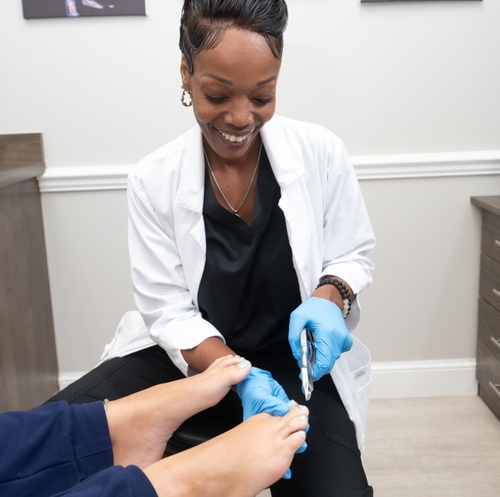
Key Features of a Medical Pedicure:
- Conducted in a sterile medical environment
- Uses sterilized, medical-grade tools
- Performed by a podiatrist or certified medical pedicurist
- Addresses foot health concerns such as fungal infections, corns, calluses, and ingrown toenails
- Do not use traditional nail polish (some medical pedicurists offer breathable, antifungal polish)
- Focuses on overall foot health rather than cosmetic appearance
A typical pedicure may temporarily address a few surface foot problems, but a medical pedicure begins with assessing foot health and treatment strategies for current issues. This is especially advantageous for people with chronic foot conditions or those susceptible to infections.
Difference Between Medical Pedicure vs Traditional Pedicure
Both medical pedicures and regular pedicures are great for your feet, but they have different goals. Knowing what sets them apart can help you decide which one is best for you.
Here’s a simple breakdown:
| Feature | Traditional Pedicure | Medical Pedicure (Medicure) |
|---|---|---|
| Purpose & Benefits | Enhances foot appearance, provides relaxation, and includes nail shaping, exfoliation, and polish | Focuses on foot health, treating conditions like fungal infections, ingrown toenails, and calluses while ensuring long-term comfort and mobility |
| Performed By | Nail technician or beautician | Podiatrist or certified medical pedicurist |
| Location | Nail salon or spa | Medical office or podiatry clinic |
| Products Used | Standard beauty products, may contain fragrances, harsh chemicals | Medical-grade, chemical-free products safe for sensitive skin |
| Tools Used | Basic nail clippers, pumice stones, non-sterile foot baths | Sterilized, medical-grade instruments (e.g., scalpels, burrs, podiatry tools) |
| Hygiene Standards | Basic hygiene; tools may not always be sterilized between clients | Strict medical sterilization; no shared foot baths |
| Treatment of Foot Issues | Surface-level care, trimming nails, and exfoliation | Treats fungal infections, ingrown toenails, calluses, corns, and cracked heels |
| Risk of Infection | Higher risk due to shared tools and potential contamination | Minimal risk due to strict sterilization protocols |
| Nail Polish | Regular or gel polish | Often avoids polish, but may offer breathable, antifungal polish |
| Suitability | Best for routine cosmetic care and pampering | Ideal for individuals with foot conditions, diabetics, seniors, and those with sensitive feet |
| Cost | More affordable; suitable for frequent beauty maintenance | Higher cost due to specialized medical care and expertise |
| Preventative Foot Care | No medical assessment or preventative recommendations | Foot assessment with personalized recommendations for ongoing foot health |
What Happens During a Medical Pedicure?
A medical pedicure is a treatment that a podiatrist or trained foot care specialist performs. A medical pedicure differs from a traditional one in that it focuses on foot health, not beauty—meaning it treats problems like fungal infections, cracked heels, calluses, and ingrown toenails. This process starts with a comprehensive foot assessment to rule out existing conditions. The specialist then cuts and shapes the nails and removes dead skin, using sterilized instruments to treat problem areas and stop infections. They may provide other treatments, including antifungal application and hydration therapy, to promote good foot health.
This type of pedicure is excellent for people who have diabetes, circulation problems, or just tend to develop issues with their feet. Because it is performed in sterile conditions using medical-grade tools, the chances of developing infections are minimal compared to traditional pedicures. A medical pedicure benefits your foot health, but many people find it very satisfying because they leave with healthy, soft feet. Consistent visits can alleviate complications later on and ensure proper foot hygiene.
Step-by-Step Process:
1. Initial Consultation
A medical pedicure starts with an extensive examination of your feet by a qualified podiatrist or foot care professional. In this phase, the practitioner checks your feet to discover other troubles such as infections, corns, bunions, or nail abnormalities. You may be questioned about your medical record, lifestyle, and any symptoms you are experiencing. This is a crucial step to help figure out the right way to treat the feet and clear out any pre-existing conditions on the foot by giving the feet a good, clean pedicure before getting the treatment.
2. Sterile Foot Soak
First, your feet are placed into a warm, disinfectant solution designed to cleanse the skin, kill bacteria, and soften rough spots. While many foot soaks may simply seek to relax feet, this sterile soak is medical-grade and focused on cleansing and infection prevention. Soaking your feet will help loosen them, allow for easy removal of callouses, dead skin, and thickened nails, and relieve tired, sore feet. It benefits people with dry, cracked, or sweaty feet.
3. Examination & Diagnosis
After treatment, the technician performs a thorough assessment to get any specific foot health issues diagnosed. They look for toenail fungus, athlete’s foot, plantar warts, calluses, or ingrown toenails. With their specialized tools and expertise, they check the general status of the nails and the feet to ensure no abnormalities. If this is not a routine checkup, then if any problems are seen, the professional will suggest the ideal treatment choices and steps to have healthy feet in the long term.
4. Toenail Care
A medical pedicure includes appropriate toenails, each of which is important. The expert beautifies your nails to prevent splitting nails, toenail ingrowth, uneven growth, etc. Unlike a regular nail salon with the same general clippers or files, a medical pedicure uses sterilized, high-end, and quality instruments that make the process safe and hygienic. The aim is to have strong nails with the least exposure to infection, breakage, or discomfort. The pedicurist may even teach you how to cut your nails and care for them at home if you need it.
5. Cuticle & Callus Treatment
Accumulation of extra cuticles and thick calluses can cause discomfort, cracked skin, and a risk of infection. At this step, the specialist delicately cuts out the most overgrown cuticles and thickened skin with sterilized tools but gently and painlessly. A medical pedicure differs from your average pedicure in that it does not use damaging scraping methods and instead treats you to safe exfoliation and smoothing without harming the skin. It prevents cracks and foot conditions associated with pressure and improves your feet’ overall appearance and comfort.
6. Fungal or Bacterial Treatment (If Needed)
Should the doctor find any fungal or bacterial infection, they would give specific treatments to deal with the disease. This might entail topical antifungal applications, medicated ointments, or perhaps indicating oral medicines in an extreme infection. Fungal infections, including toenail fungus or athlete’s foot, may quickly become chronic and require medical care to avoid expanding to other areas. A podiatric pedicure treats these concerns in a sanitary environment by a medically trained professional, addressing the recurrence risk and maintaining optimal foot health longer.
7. Hydration & Care Advice
Medical-grade moisturizers and hydrating treatments are administered to replenish moisture and nutrients in your feet. These are formulated to go deep into the skin to heal dryness, cracks, rough patches, etc. It is beneficial if you have diabetes and issues with your feet or chronically dry skin. The specialist also shares wisdom about caring for your feet at home, including suggestions for proper footwear, foot hygiene, and skin care. This will help keep them in the best shape between professional treatments.
8. Optional Breathable Polish
Such clinics also include an optional application of medical-grade breathable nail polish, though pedicures focus more on foot health. Unlike regular nail polishes that can seal the moisture under them, making it easy for fungal infections to thrive if a person is already prone to that condition, these specially formulated polishes let the nail bed breathe, resulting in little to no risk of such infections while still giving that high-quality, finished look. Perfect for those who wish to create a more beautiful look on their nails without sacrificing the health of their feet. The polish is usually non-toxic and designed to strengthen your nails and help them heal.
Benefits of Medical Pedicures
A medical pedicure can provide more significant benefits than the traditional constitution, especially for those with specific foot health concerns.
Key Benefits:
- Hygienic and Safe: They maintain sterilized tools, which reduces the threat of infections. Pest control and a sanitary environment through strict sanitization protocols leave almost no chances of bacterial or fungal contamination in the product. This makes medical appointments critical beyond any healthy human being with their immune system intact.
- Addresses Medical Condition: This category includes fungal infections, calluses, and heel rasps. These treatments utilize medical-grade techniques and products to heal quickly and avoid reoccurrence. With professional care, those conditions can be managed without complications.
- Prevents Future Issues: By getting medical pedicures regularly, you will not have to face foot problems in the first place. Doing so will help prevent infections, ingrown nails, and painful calluses. Regular foot care also enhances circulation and overall foot health.
- Ideal for Diabetics and Seniors: The best care for highest-risk feet. Careful monitoring for wounds and ulcers, which can lead to serious infections in diabetics, is also responsible for preventing these microorganisms. Senior foot treatments are gentle, addressing issues like thinning skin and decreasing circulation with age.
- Professional Diagnosis: Enables the early detection and treatment of common foot problems. Early detection can help prevent issues from worsening and becoming chronic foot issues. Professional pedicures are the best way to take proactive care of your feet and avoid discomfort over the long term.
- Non-Invasive & Pain-Free: These painless treatments are gentle and do not require aggressive procedures, making them ideal for sensitive feet. We want to restore comfort and mobility while providing a pampering and healing environment.
Who Should Get a Medical Pedicure?
A medical pedicure is beneficial for anyone who prioritizes foot health. However, it is particularly recommended for:
- People with diabetes (to prevent infections and ulcers)
- Individuals with fungal nail infections
- People suffering from ingrown toenails
- Athletes prone to foot issues
- Seniors with thickened or damaged toenails
- Individuals with calluses or cracked heels
- Anyone looking for a hygienic, safe alternative to traditional pedicures
Medical Pedicure Before and After
A significant transformation can occur after just one medical pedicure session. Before a medicure, individuals may have:
- Thickened, discolored, or infected nails
- Painful ingrown toenails
- Dry, cracked heels
- Hard, uncomfortable calluses
Once a pedicure is done, the feet feel refreshed, smoothened, and better. A pedicure can also help maintain healthy feet, prevent infection, and feel comfortable. Due to its medical nature, it helps with circulation and foot function.
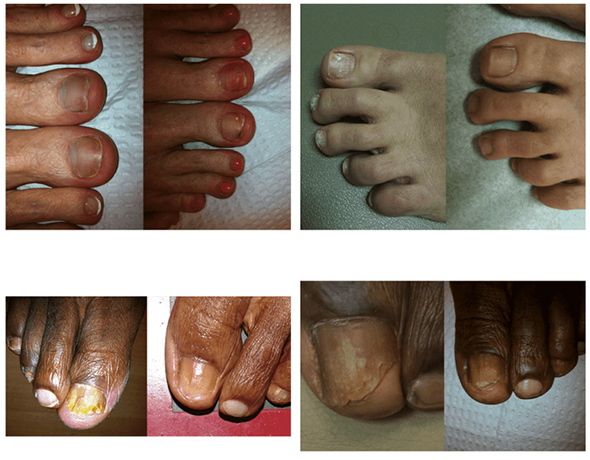
Why Choose a Certified Medical Pedicurist for Your Medicure?
Opting for a certified medical pedicurist for your medicure means your feet get the best medicure in a safe and hygienic environment. Unlike an ordinary contract pedicurist, a standard confirmed therapeutic pedicurist gets exclusive prep work to manage foot diseases like professional athlete’s foot, grumpy toes, moles, and name toes. They utilize sterilized instruments and adhere to stringent sanitary protocols to reduce the chances of infections or complications. This is the perfect option for anyone with diabetes, circulation problems, or other medical issues that need special consideration.
In addition to the common foot problems, a medical pedicurist can offer optimal personalized advice and preventative care for your feet. They evaluate the health of your feet, suggest treatments, and provide guidance about proper care of the nails and skin. Their skill makes sure that little foot issues do not develop into a lot of much larger scenarios. You can feel confident and at peace of mind as a certified professional will offer visitors many therapeutic and medical benefits of a pedicure.
Reasons to Choose a Certified Medical Pedicurist:
- Expert Knowledge: A medical pedicure specialist well-versed in foot anatomy and a summary of foot problems such as fascia, nails, and nails. This ensures the proper treatment and long-run foot well-being options are created simply for you.
- Medical-Grade Tools & Products: Medical pedicures guarantee the use of sterilized tools. Medical professionals use medical, dermatologically tested, high-quality products. This type of specialized therapy wards off infection and helps the healing process, making it a perfect choice for anyone with delicate or compromised feet.
- Safe for High-Risk Individuals: Medical pedicures are suitable for people with diabetes, circulation difficulties, or other requirements for additional foot care. The treatment is done carefully and cautiously to avoid wounds, infections, or other complications.
- Comprehensive Foot Care: Medical pedicures go beyond beauty and tackle issues related to nails, skin, and foot health that are generally addressed with a standard pedicure. This includes professional nail cutting, calluses removal, and localized treatment for minor infections or pain.
- Prevention of Future Problems: Since regular medical pedicures are a habit, the expert will know immediately if any change occurs in health. Thus, it is treatable before serious problems come. The expert also gives tips on caring for the feet, choosing footwear, and hygiene for longevity.
Visit Foot, Ankle & Leg Vein Center
A traditional pedicure is not medical but is a cosmetic foot care procedure. For anyone with particular foot conditions, a medical pedicure is a suitable service that offers a safe, hygienic, and practical way to maintain the foot. In contrast to a traditional pedicure, which is more cosmetic-oriented, a paramedical pedicure targets not only surface-level issues but also those that can lead to painful problems down the line. You’ll have peace of mind knowing that the person handling your feet is certified and experienced enough to provide you with quality care and lifelong foot health.
If you are searching for fancy toenails and more, focus on foot health and make an appointment for a medical pedicure today. Not only does this specialized treatment make your feet look and feel great, but it also helps with your feet’ health for years. A tip from our website is that paying for foot care keeps you stuck doing what you love, pain-free and without the hassle of preventable foot issues.
Give your feet the expert care they deserve with a medical pedicure at Foot, Ankle & Leg Vein Center. Unlike a traditional pedicure, this treatment goes beyond aesthetics, addressing foot health with precision and hygiene in mind. Our procedures are performed in a sterile, professional environment, ensuring the highest level of safety.
Take the next step toward healthier, pain-free feet. Call us today at (561) 750-3033 (Boca Raton, FL) or (561) 725-5066 (Boynton Beach, FL) to book your appointment, or schedule a consultation through our contact page for added convenience.


